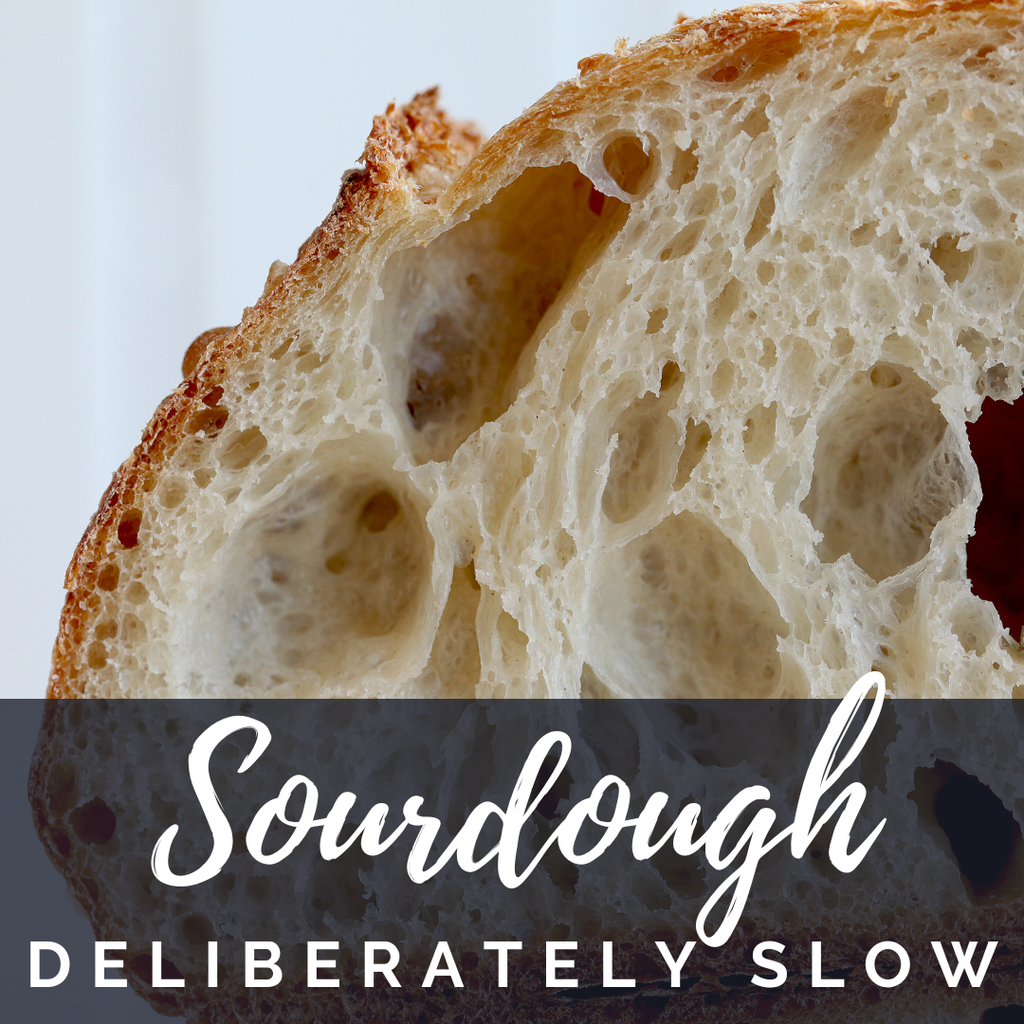January 01, 2024
Embracing the Deliberately Slow Charm of Sourdough

The Science Behind Sourdoughs Delicious Pace
If the sourdough process is rushed, it may lead to several issues:
Poor flavor development:
Sourdough bread has this rustic charm, doesn't it? That tangy flavor and crusty goodness make it stand out. But what really makes sourdough unique isn't just the taste – it's the slow, deliberate way it's made. Let's dive into why sourdough is all about taking it slow and uncover the secrets that make it a true culinary masterpiece. Sourdough bread is traditionally made as a slow food due to the nature of the fermentation process involved. The key component in sourdough is a mixture of flour and water that captures wild yeast and lactic acid bacteria from the environment. This mixture is called a "starter" or "levain." The slow fermentation process allows these microorganisms to develop and multiply.
Why Slow Fermentation:
So, what's the deal with sourdough's deliberate slowness? It's all about the intricate dance of fermentation. Unlike the quick rise you get with commercial yeast, sourdough relies on wild yeast and lactic acid bacteria. These two characters transform the dough over time, giving it that special something.
Sourdough starters pull in wild yeast from the air. This wild yeast, teams up with lactic acid bacteria to leaven the dough. Unlike the speedy action of commercial yeast, wild yeast takes its sweet time, letting the flavors develop in a more nuanced way.
Lactic Acid Bacteria:
Alongside wild yeast, lactic acid bacteria like Lactobacillus hang out in sourdough starters. These guys produce lactic acid as they munch on the flour's sugars, giving the bread its signature tang. The slow fermentation lets these bacteria work their magic, creating that unmistakable sourdough taste. The slow fermentation process allows for the production of organic acids, particularly lactic acid and acetic acid. These acids contribute to the characteristic tangy flavor of sourdough bread. Rushing the process may result in a less developed flavor.
Unveiling the Flavor:
The deliberate slow pace of sourdough fermentation is like unlocking a treasure chest of flavors. As the wild yeast and lactic acid bacteria chow down on sugars and proteins in the flour, they create a bunch of aromatic compounds. Alcohols, esters, organic acids – these all add up to the rich and diverse taste of sourdough.
Gluten, the Silent Architect and Texture:
And then there's the gluten. Patience is the name of the game here too. The long fermentation allows enzymes in the flour to break down proteins into more elastic forms. This process gives sourdough its chewy texture and sturdy structure, making each bite a satisfying experience. Extended fermentation also helps break down gluten in the flour, making it easier to digest and resulting in a more open and airy crumb structure. A rushed process may not allow for proper gluten development, leading to a denser and less appealing texture.
Digestibility and Goodness:
But it's not just about taste and texture. The slow fermentation of sourdough also makes it easier on the stomach and packs in more nutrition. The breakdown of gluten and other components during the slow process makes the bread more digestible. Plus, beneficial compounds like phytase enhance mineral absorption, making sourdough not just tasty but also wholesome. Sourdough fermentation partially breaks down gluten and phytic acid, potentially making the bread more digestible for individuals with mild gluten sensitivities and improving mineral absorption.
Nutrient enhancement:
The longer fermentation time enhances the bioavailability of nutrients in the flour, making them more easily absorbed by the body. This can be beneficial for digestion and overall nutritional value.
If the sourdough process is rushed, it may lead to several issues:
Poor flavor development:
The characteristic tangy flavor of sourdough comes from the slow production of organic acids. Rushing the process may result in a bland taste.
Incomplete gluten development:
Incomplete gluten development:
Gluten needs time to properly develop and give the bread structure. A rushed process may result in a dense and chewy loaf.
Limited nutrient enhancement:
Limited nutrient enhancement:
The extended fermentation time contributes to nutrient availability. Rushing the process may reduce the nutritional benefits of the bread.
While it's possible to make sourdough bread with a shorter fermentation time, it may not capture the full depth of flavor and texture that slow fermentation provides. The slow food approach to sourdough is deeply rooted in tradition and craftsmanship, emphasizing the importance of patience and allowing natural processes to unfold.
While it's possible to make sourdough bread with a shorter fermentation time, it may not capture the full depth of flavor and texture that slow fermentation provides. The slow food approach to sourdough is deeply rooted in tradition and craftsmanship, emphasizing the importance of patience and allowing natural processes to unfold.